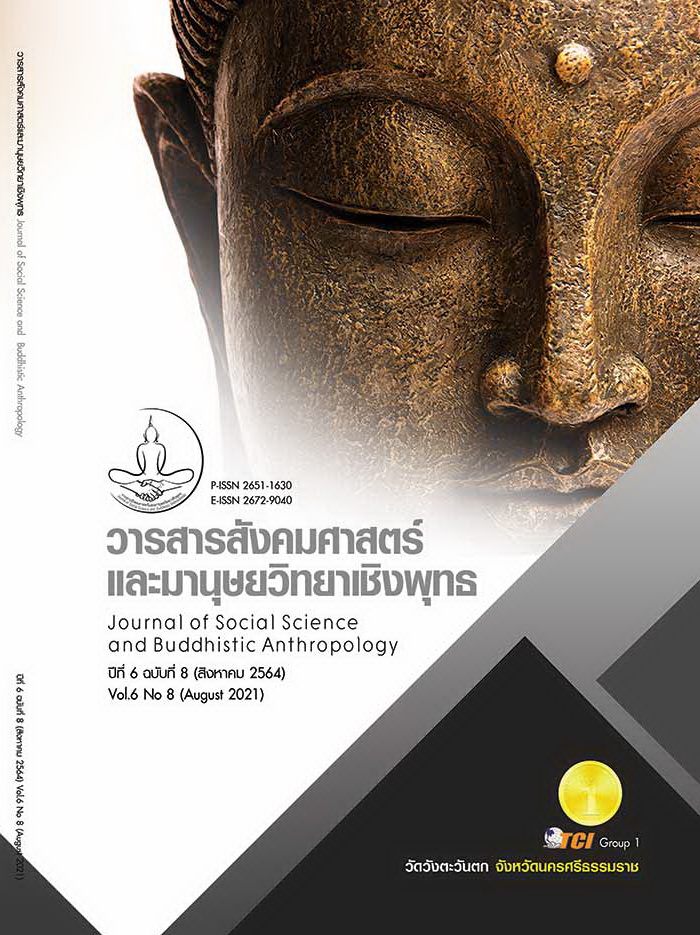A MODEL FOR EFFECTIVE TEAM DEVELOPMENT IN BASIC EDUCATION INSTITUTIONS UNDER SAMUTPRAKAN PRIMARY EDUCATIONAL SERVICE AREA 2
Keywords:
Effective Team, Development Model, Basic EducationAbstract
The objectives of this article were to: 1) to study the condition of team building in basic education institutions. 2) to develop an effective team development model in basic education institutions. 3) to evaluate an effective team development model in basic education institutions. The article was using a mixed methods research there were quantitative research and qualitative research designed into three stages. 1) study the condition of team building in basic education institutions collect data from administrators, supervisors and teachers totaling 177 persons by stratified random sampling and simple random sampling the tool used questionnaire and interview 2 royal reward school administrators by purposive sampling the tool used semi-structured interview 2) develop an effective team development model in basic education institutions with 9 experts by semi-structured interview form 3) evaluate an effective team development model in basic education institutions the sample group was the same sample group as stage 1 by using the assessment. The statistics were analyzed by percentage average standard deviation and content analysis. The results of the study of team building conditions in basic education institutions the overall practice is at a high level the component with the highest was planning , the lowest was evaluation. The results of the development of an effective team development model in basic education institutions consist of 4 parts as follows: introduction, objective, effective team components, and process. There were 7 components as follows: planning, cooperation, coordination, communication, a good atmosphere, evaluation and improvement. The results of evaluate it was found that the mean was at the high level of all 4 aspects probability, feasibility, accuracy followed by last was suitability.
References
จิรวัฒน์ รจนาวรรณ. (2555). กลยุทธ์ คิดแบบผู้นำทำแบบนักบริหาร. กรุงเทพมหานคร: ซีเอ็ดยูเคชั่น.
ชาญชัย อาจินสมาจาร. (2553). ทฤษฎีการบริหารตามแนวคิดของปราชญ์ตะวันตก. กรุงเทพมหานคร: ปัญญาชน.
ธีระ รุณเจริญ. (2554). สภาพและปัญหาการบริหารและการจัดการศึกษาขันพื้นฐานของสถานศึกษาในประเทศไทย. กรุงเทพมหานคร: วี.ที.ซี.คอมมิวนิเคชัน.
เนตร์พัณณา ยาวิราช. (2560). การจัดการเปลี่ยนแปลงและการพัฒนาองค์การ. กรุงเทพมหานคร: โรงพิมพ์บริษัท ทริปเพิ้ล จำกัด.
ราวี กลิ่นหอม. (2553). การบริหารงานวิชาการของผู้บริหารสถานศึกษาในสังกัดสำนักงานเขตพื้นที่การศึกษา มัธยมศึกษา เขต 1. ใน วิทยานิพนธ์ครุศาสตรมหาบัณฑิต. สาขาวิชานโยบายการจัดการและความเป็นผู้นำทางการศึกษา. จุฬาลงกรณ์มหาวิทยาลัย.
วรรณพร ไกรเลิศ. (2554). องค์กรกระจายอำนาจ: The 3 Keys To Empowerment. กรุงเทพมหานคร: เอ อาร์ บิซิเนส เพรส.
วิโรจน์ สารรัตนะ. (2556). กระบวนทัศน์ใหม่ทางการศึกษากรณีทัศนะต่อการศึกษาศตวรรษที่ 21. กรุงเทพมหานคร: หจก.ทิพยวิสุทธิ์.
สํานักงานคณะกรรมการข้าราชการพลเรือน. (2559). คู่มือการกำหนดสมรรถนะในราชการพลเรือน: คู่มือสมรรถนะหลัก. นนทบุรี: บริษัทประชุมช่าง จำกัด.
สำนักงานเลขาธิการสภาการศึกษา. (2552). กรอบทิศทางการพัฒนาการศึกษา ในช่วงแผนพัฒนา เศรษฐกิจและสังคมแห่งชาติ ฉบับที่ 10 (พ.ศ. 2550-2554) ที่สอดคล้องกับแผนการศึกษา แห่งชาติ (พ.ศ. 2545-2559). กรุงเทพมหานคร: โรงพิมพ์แห่งจุฬาลงกรณ์มหาวิทยาลัย.
สุนันทา เลาหนันทน์. (2551). การสร้างทีมงาน. กรุงเทพมหานคร: ดี.ดี.บุ๊คสโตร์.
อัยนา เพ็ชรทองคํา. (2551). การศึกษาสภาพและปัญหาการทำงานเป็นทีมของผู้บริหารและครูในโรงเรียนประถมศึกษาเอกชนที่ได้รับรางวัลพระราชทาน สังกัดสำนักงานคณะกรรมการการศึกษาเอกชน. ใน วิทยานิพนธ์ครุศาสตรมหาบัณฑิต สาขาวิชาการบริหารการศึกษา. จุฬาลงกรณ์มหาวิทยาลัย.
Cronbach, L. J. (1990). Essentials of psychological testing. (5 th ed.). New York: Harper Collins Publishers.
Giuliani, A. & Cestaro B. (1997). Cestaro BB. Exercise, free radical Generation and vitamin. Eur Cand Pre 1997, 6(2), 55-67.
Hall, D. & Robert, W. (1999). The use of dual planning periods by a middle school team. Dissertation Abstracts International, 59(9), 475-501.
Keeves, P. J. (1988). “Model and Model Building” Educational Research Methodology and Measurement: An International Handbook. Oxford: Pergamon Press.
Krejcie, R. V. & Morgan, D. W. (1970). Determining Sample Size for Research Activities. Educational and Psychological Measurement, 30(3), 607-610.
Likert, R. (1967). “The Method of Constructing and Attitude Scale”. In Reading in Fishbeic, M. (Ed.) Attitude Theory and Measurement (pp. (90-95)). New York: Wiley & Son.
Naraya, A. (2008). Role of Assigned Team Goal in the Relationship Between Individual Difference Factors and Self-set Goal in a Pre-team Context. Dayton: Wright State University.
Pitsoe, J. V. (2014). How do school Management Teams Experience Teamwork: A Case Study in the School in the Kamwenge District, Uganda. Mediterranean Journal of Social Sciences, 5(3), 138-145.
Stott, K. & Walker, A. (1995). Teams Teamwork & Teambuilding. Singapore: Prentice-Hall.
Trimble, S. & Miller, J. (1996). “Creation, Invigoration and Sustaining and Sustaining Effective Teams (Personalizing the High School: the Most Important Reform)”. NASSP Bulletin, 2(4), 35-40.
Whyte, W. F. et al. (1991). Participatory Action Research. London: Sage.








